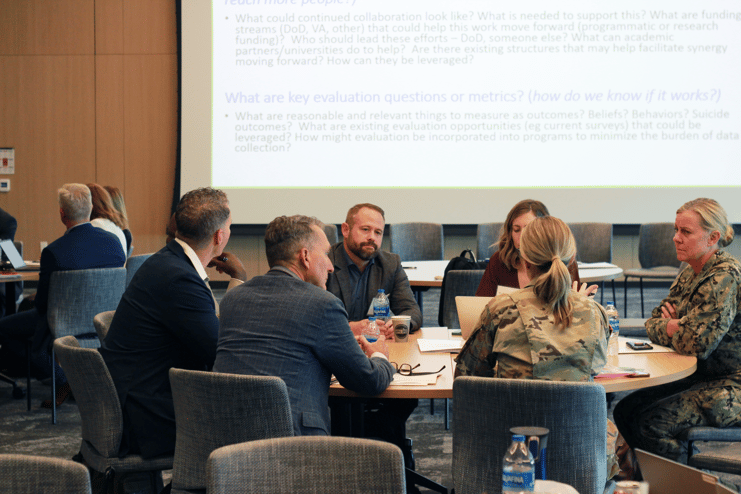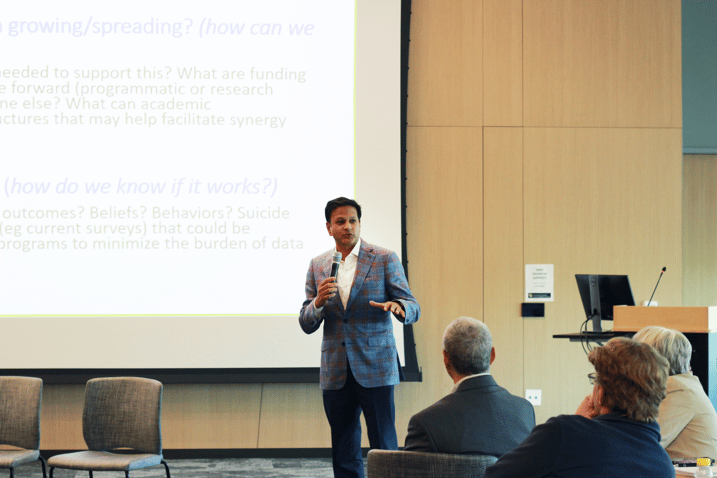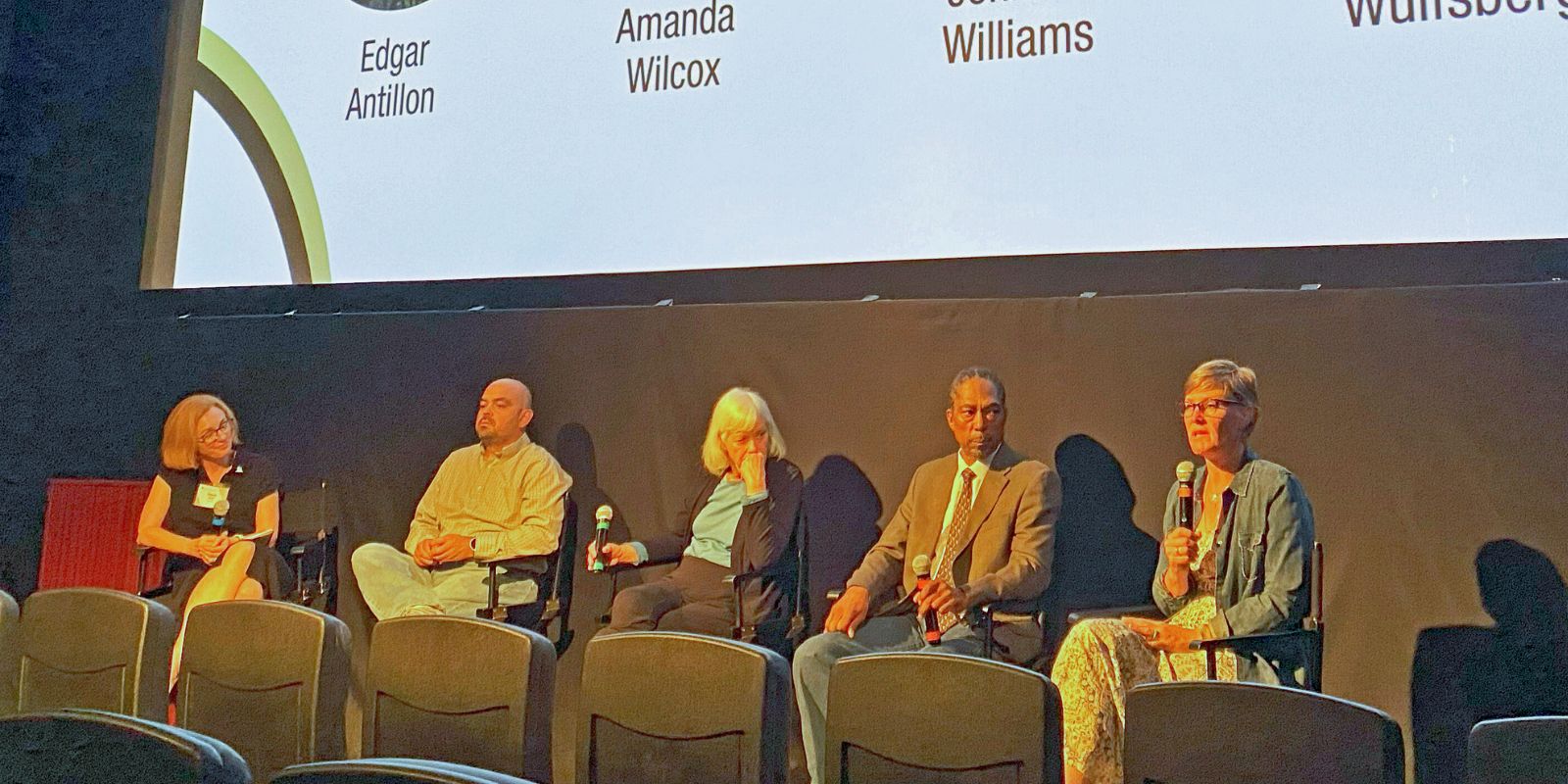Preventing suicide among military service members and their family members is one of the top priorities for the United States Department of Defense (DoD). The 2021 DoD Annual Suicide Report found that 70% of suicides among service members are enacted with a firearm, as are 60% of suicides among service member spouses.
The scope of military suicides and high percentage of suicides by firearm is concerning not only to defense agencies, but also to firearm injury prevention researchers, clinicians, firearm industry leaders, and community organizations.
On Wednesday, the second annual Military Firearm Suicide Prevention Summit hosted by the University of Colorado Firearm Injury Prevention Initiative and CU Center for Combat Medicine and Battlefield (COMBAT) Research brought stakeholders to the CU Anschutz Medical Campus to share research, strategies, and collaborative ideas for addressing and preventing firearm suicide. Similar to last year’s meeting, one of the major goals of the summit was to foster opportunities for synergy across all partner organizations.
“What brings us together today is our common mission to prevent firearm injuries and deaths,” said summit moderator Emmy Betz, MD, MPH, in her opening statement. “We all have our own stories of how we’ve been affected by firearm suicides, professionally and personally.”
Betz, director of the CU Firearm Injury Prevention Initiative and professor of emergency medicine in the CU School of Medicine, reaffirmed the need for collaboration on multiple levels.
“We have a duty in the academic and medical spaces to work toward solutions for this public health crisis,” she said. “I’m excited to be partnering with so many different groups across the nation and look forward to what will come from our collaboration today.”

Emmy Betz, MD, MPH, speaks during group discussion at the summit.
Analyzing messaging and availability of storage options
More than 93% of military suicides by firearm involve the use of a personally owned, rather than military-issued firearm. There are important considerations on messaging around firearm locking devices and storage options.
In her research presentation on secure firearm storage, Betz emphasized that a major goal is to make storage universal, easy, and normalized among service members and families. Betz discussed legality, liability, and logistics issues around firearm storage, how family members can get involved, and community perspectives affecting firearm storage.
“There could be plenty of reasons why someone may want to store their firearms outside their home, not only those at risk of suicide,” Betz explained. “Those who want to protect their families or others accessing the firearm should have easy, accessible options available.”
Mike Anestis, PhD, executive director of the New Jersey Gun Violence Research Center and CU Firearm Injury Prevention Initiative collaborator, presented research on leveraging messaging to promote secure firearm storage. In his research, he found that service members who hadn’t disclosed their suicidal thoughts to anyone were more likely to store their firearms unsecured.
In another research study, Anestis found that most participants preferred to receive messaging on firearm safety and suicide prevention from law enforcement, military personnel, military veterans, and family members. Physician, celebrities, and casual acquaintances were considered less credible sources.
The research on messaging, he said, reinforces why firearm secure storage should be an accessible conversation to have among friends and family members, including in military settings.
Programmatic and community efforts
The summit hosted two panels to introduce programmatic updates from military and community personnel. Between both panels, there was a strong sense of unity among partners.
Representatives from the U.S. Army, Navy, Air Force, Marine Corps, Space Force, National Guard Bureau, and Defense Suicide Prevention Office spoke on the first programmatic panel, and representatives from organizations including the American Foundation for Suicide Prevention, National Sports Shooting Foundation, U.S. Department of Veterans Affairs, Walk the Talk America, the Overwatch Project, and local firearm retailers spoke on the second panel.

Military representatives speak during the first programmatic updates panel.
“The average trend of military suicides has tracked upward since 2011, something we are continually trying to bring down,” said Colonel (ret.) Alicia Matteson, PhD, senior strategic advisor at the Defense Suicide Prevention Office. “It is crucial we push forward with encouraging safe storage options for service members and families. We have exciting opportunities to work together to continue assessing behaviors and attitudes of service members and their link to suicide and firearm ownership.”
Firearm retail and industry representatives expressed how firearm safety education can work in tandem with business tactics. “We are eager to be a partner working with communities to create tools and resources promoting safe storage options,” said Jacquelyn Clark, a local firearms retailer who is working to provide more firearm lock boxes with sales.
Crucial cross-collaboration
Last year’s meeting culminated in participants creating 10 recommendations to enhance firearm suicide prevention and interventions among service members. To foster teamwork, this year’s event closed with small breakout groups discussing opportunities for collaboration, barriers to collaborations growing and spreading, and key evaluation metrics for measuring outcomes.

Attendees discuss collaboration prompts during the small group breakout sessions.
Summit co-organizer Ian Stanley, PhD, psychological health lead for the CU Center for COMBAT Research and military and veteran lead for the CU Firearm Injury Prevention Initiative, echoed a call for personal connection to service members.
“We need to do a better job at elevating, in our research, the voices of those in the firearm community and those impacted by firearm suicide,’” he said. “Through the focus of this year’s summit on fostering military-civilian partnerships, we are poised to conduct more impactful research to address firearm suicide in the military.”

Ian Stanley, PhD, moderates group discussions.
With the issue of firearm suicides remaining a major focus for the DoD, leadership will need to get creative with new solutions, said Colonel Vik Bebarta, MD, director of the CU Center for COMBAT Research and professor of emergency medicine.
“If the issue of solving rising firearm suicides was easy, someone would have already solved it. Our goal at the Center for COMBAT Research is to solve the military’s toughest clinical challenges, and this is a one of them. If anyone can do it, it’s us, the nation’s experts leading change,” he said.

Colonel Vik Bebarta, MD, gives a closing statement.
In her closing statement, Betz said she was excited for new collaborations and continued partnerships.
“I feel the passion you all have for this work” she said. “I’m hopeful for what’s to come from our meeting. We are committed to continuing these projects and partnerships with our common goal of preventing firearm injuries and deaths.”



